When
Mazda launched the first-generation
Mazda MX-5 in 1989, the Japanese carmaker jumpstarted the resurgence of lightweight, front-engine, rear-wheel-drive, two-seater roadsters that its competitors soon churned out their own versions of it. Fast-forward to nearly 30 years later and the MX-5, now on its fourth generation, is the only one left standing long after the dust has settled.
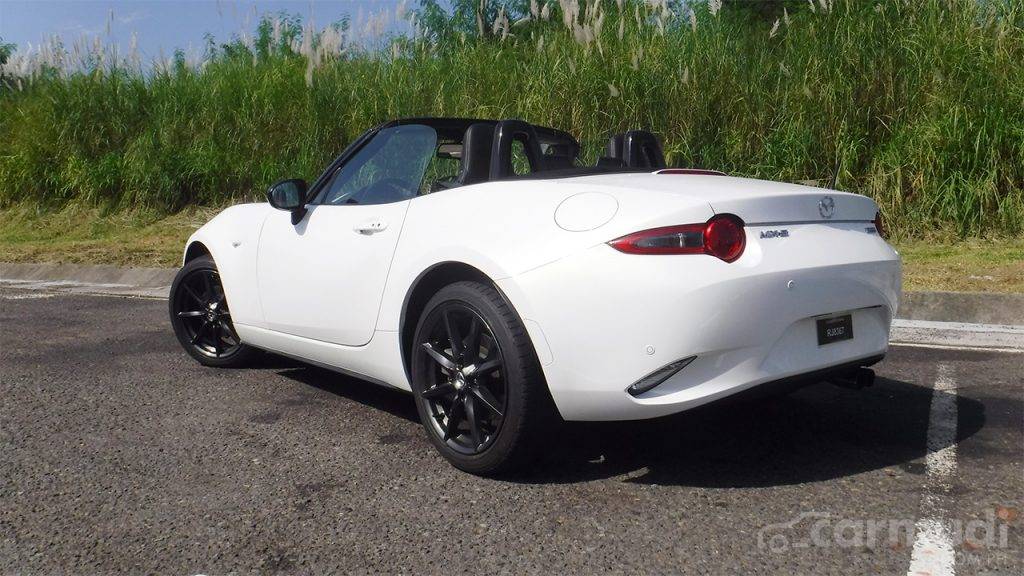
STYLING - 9/10
The first-gen MX-5, designated internally as the NA, was a love-it-or-hate-it affair. While some love its cute styling with the short wheelbase and rounded edges, others found it too cute, with some even going so far as to call it a hairdresser’s car--and that’s wasn’t even a compliment. Sadly, even the succeeding generations--the NB and NC--continued the slightly dumpy design. Well, finally, after 26 years, with the launch of the fourth-generation ND MX-5, Mazda has foregone the nubby styling in favor of something that’s low-slung and sleek as its
“Kodo: Soul of Motion” design language finally made the MX-5 look like a proper sports car, down to the long hood and short rear deck.
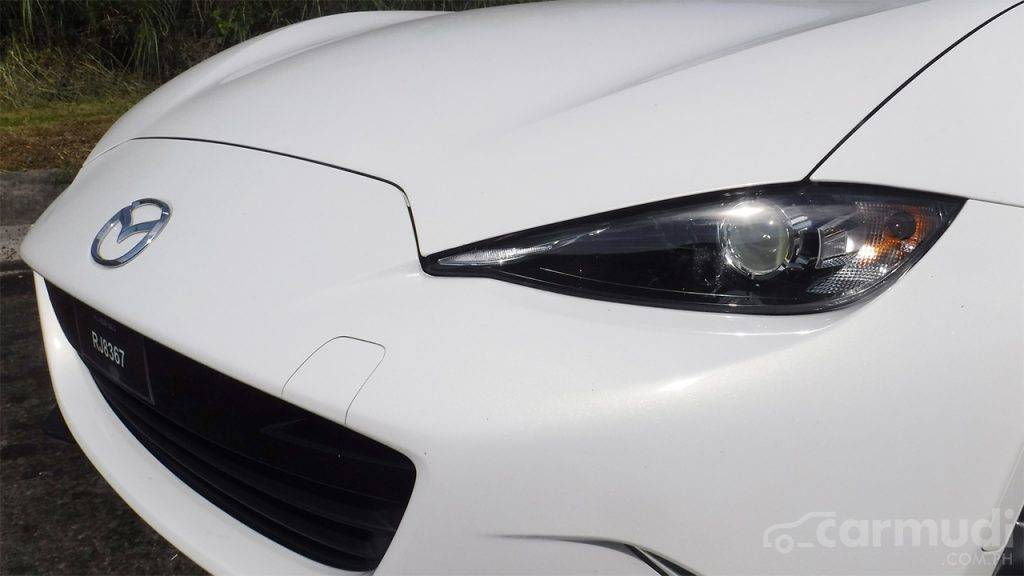
EXTERIOR
No longer does the MX-5 look like a toy car like its predecessor. With its road-hugging stance, sleek headlights, and long, tapered snout that’s accentuated further by the raised arches over the front wheels, likening its appearance to that of a serpent’s head isn’t too far off. The
blacked-out windshield frame,
door mirror pods, and
rollover hoops behind the headrest only enhance further the MX-5’s sporting yet dramatic look. Completing the ND MX-5’s classic roadster stance is the short rear deck which actually hides a voluminous trunk space.
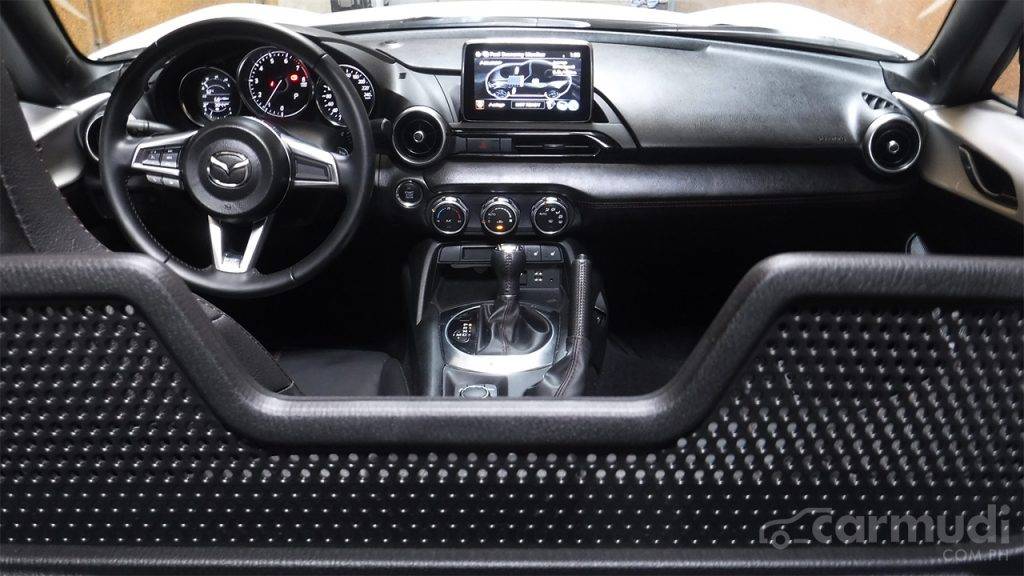
INTERIOR
Getting inside the MX-5 isn’t an exercise in contortionism unlike in most sports cars, especially with the top down. The car rides low to the ground though so the act of sitting down is more like falling into the seats. Once you’ve settled inside the cabin, you’ll find that the MX-5 was designed with the driver in mind since nearly everything is easily within reach--a true testament to Mazda’s
Jinnbai Itai philosophy, of the car and the driver functioning as one. Even how your left arm and elbow easily nestles onto the inner door panel armrest lets you know that the MX-5 has been designed for your enjoyment and comfort. Capping off this driver-centric affair is Mazda’s
Command Control system which lets you navigate the menus of the
Mazda Connect infotainment system simply by touch and with only minimal glances at the
seven-inch LCD touchscreen mounted on top of the center console. The only problem with MX-5’s ergonomics is that its hand brake is located on the passenger side of the center console instead of driver’s side. A little counterintuitive but then again, when you remember that the MX-5 was designed and developed in Japan--and its predilection to the right-hand-drive orientation--it quickly becomes a non-issue. The use of leather wasn’t spared in the MX-5’s cabin as, besides the seats, cowhide can also be found on the inner door panel, the lower part of the dashboard, the steering wheel, transmission lever, and hand brake. Use of faux carbon fiber is limited to the aforementioned inner door panel armrest. As for the glove compartment, it isn’t found in its usual place at the bottom part of the passenger side dashboard but between the high seatbacks underneath the switch which deploys the fabric roof from its stowage area behind the seats.
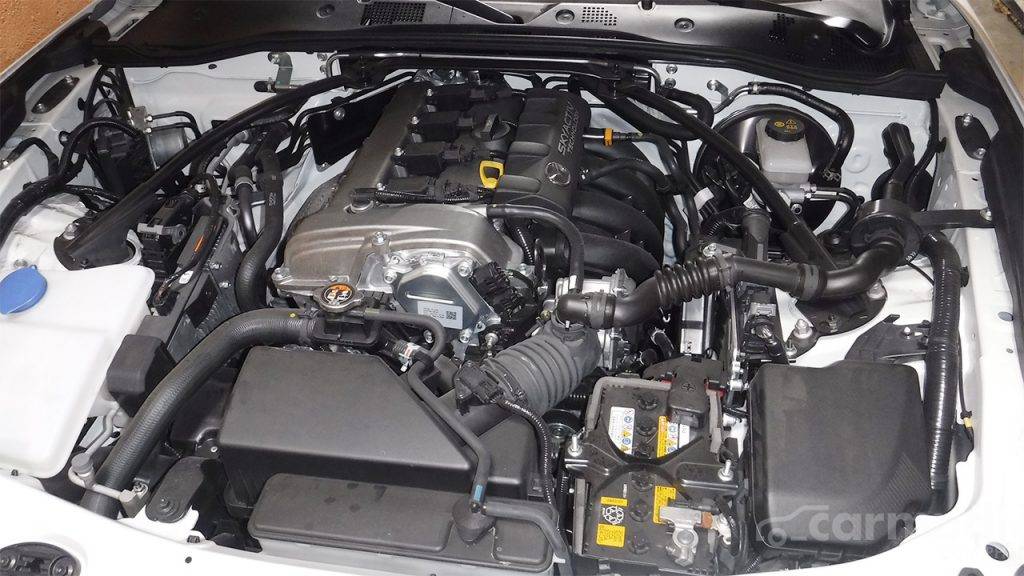
ENGINE & PERFORMANCE - 8/10
A firm push of the Engine Start/Stop Button easily brings the
158hp,
200Nm 2.0-liter inline-four mill to life while a light push on the accelerator pedal quickly propels all
1,063kg of the MX-5 forward with no hesitation thanks its paddle-equipped
six-speed automatic transmission. If you prefer to do it the old-fashioned way, swapping cogs can also be done with the stick by pulling it down all the way into Drive and then flicking it to the left. Upshifts are then done by pulling the stick back while pushing it forward shifts the cogs down a notch.
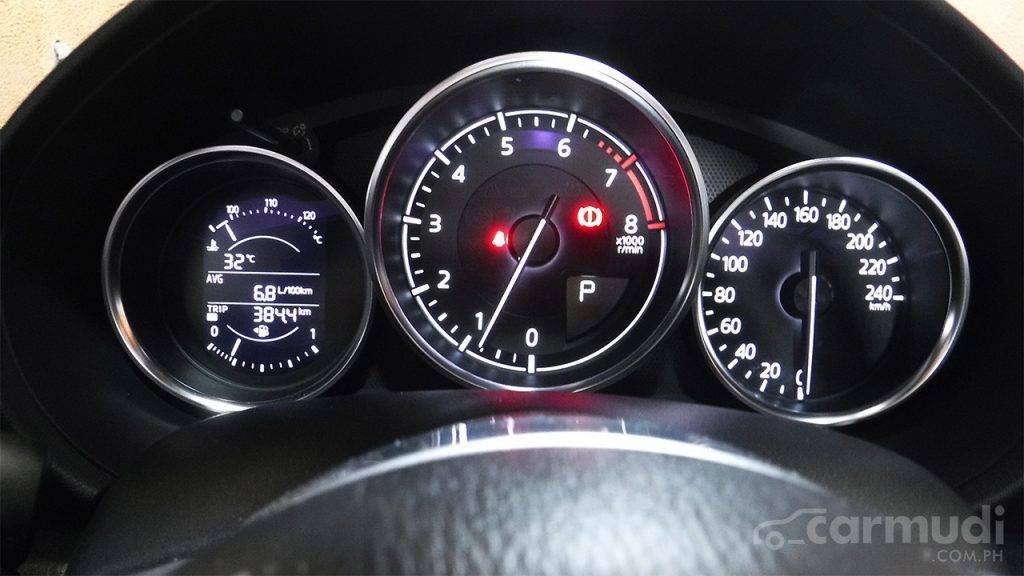
FUEL ECONOMY - 9/10
The MX-5 is such a joy to push around that you’d be surprised to find that you’re still getting
15km/L in combined city and highway driving, thanks to the car’s Skyactiv suite of fuel-efficient technologies like the engine idling stop and regenerative braking systems. If you have a lighter foot, you’d definitely get more than that, with
17km/L a conservative estimate.
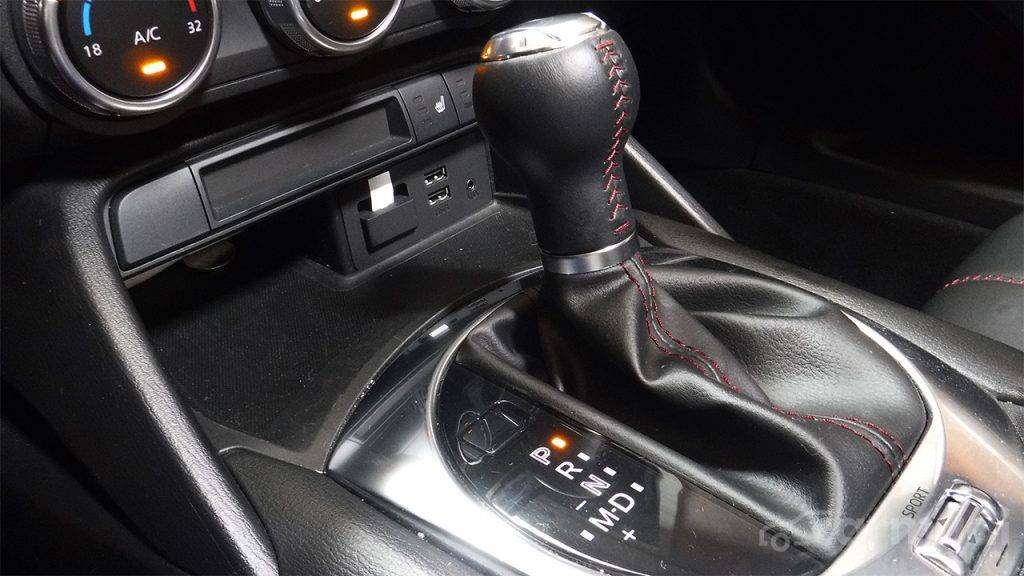
FEATURES - 9/10
If, for some strange reason, you find the driving dynamics of the MX-5 a little lacking and you want to liven it up just a little more, Mazda fitted it with the same
Sport switch found in the more plebeian Mazda 2. Located at the foot of the transmission lever just like in the 2, it changes the vehicle’s
engine mapping to give the MX-5 a more, well, sportier drive. Considering the MX-5 is fun to drive as-is in its default mode, the Sport switch’s serves as a safety blanket of sorts-- better to have it and not need it than to need it and not have it. With the Sport mode in the “On” position, the MX-5
revs higher,
accelerates quicker--both off the line and while you’re driving--and the throttle pedal reacts to the slightest touch.
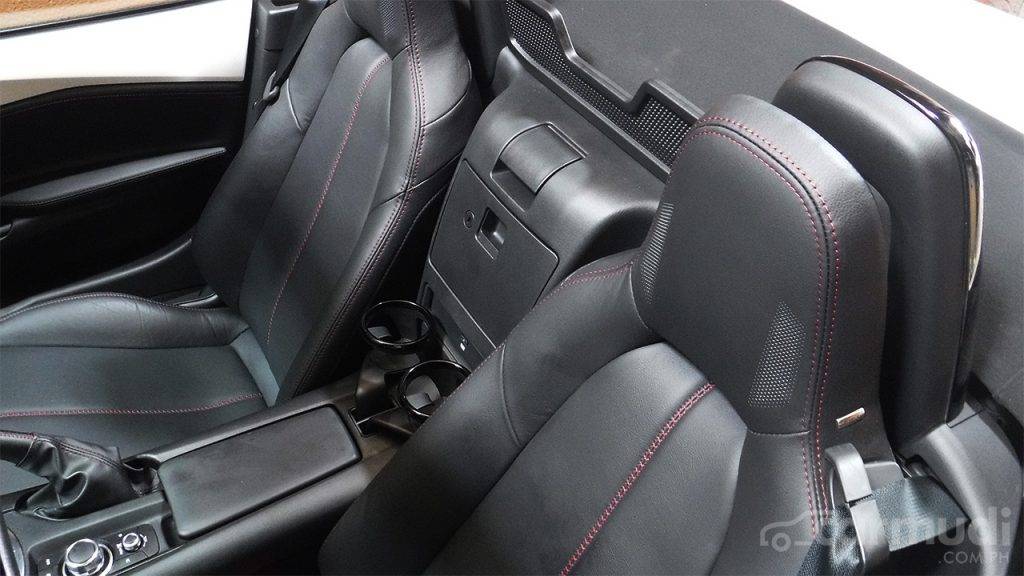
DRIVING IMPRESSIONS - 8/10
Despite its sporting intentions, the MX-5 rides comfortably, with none of the bone-jarring experience that’s usually associated with sports cars. Our only problem with the ND MX-5 is that its
double wishbone front and
independent multi-link rear suspension allows for some body roll when taking corners briskly. According to Mazda, this is intentional to convey to the driver the sensation of speed. It takes some getting used to if you prefer a setup that rides as flat as possible when cornering since it inspires confidence, because when you’re tossing your car around a corner at speed, you want it to feel that it’s capable of doing so, not make you second-guess if it can or can’t do it. The
Fiat 124 Spider, which was launched globally in 2015 at the Los Angeles Auto Show and shares the same platform as the MX-5, reportedly offers a stiffer ride so it’s really a matter of taste and disposition. Also, if you’re used to driving cars with hardtop roofs, driving a roadster like the MX-5 is a little disconcerting at first because you hear a lot more outside noise since the fabric roof has no noise insulation. With the roof up at a traffic light, you could actually hear the conversation the motorcycle rider behind you is having with the pillion passenger. What’s surprising though was that with the roof stowed and the door windows up, an intelligible conversation with the passenger is actually possible without having to raise your voice too much while doing 100kph on the TPLEX. And the best part of the MX-5’s soft top is that you can actually raise and lower it without having to get up and out of the front seats.
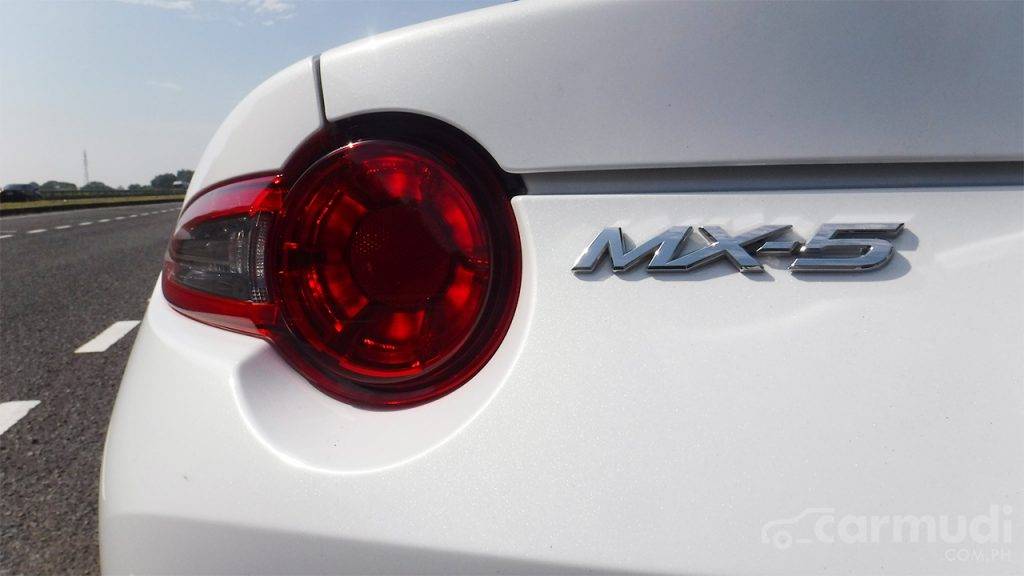
VERDICT - 9/10
The Mazda MX-5 is a unique proposition if you’re in the market for a new car. It’s relatively affordable at
P1.98 million, it looks and drives like a sports car, but more important, it’s a convertible which is a rarity in local car market. It also has none of the headaches associated with owning a sports car, like miserable fuel economy (thanks to Mazda’s
SkyActiv suite of technologies) and needless expense (due to the Japanese carmaker’s
Yojin 3 package). Sure, it’s impractical but, unless you plan to stay single forever, it’s not often that you’ll get the opportunity to buy a car for your own selfish reasons. Drop the cash for it now while you can before things like advanced age, cataracts, and arthritis hold you back from acquiring one.
PROS & CONS
PROS
- It’s the most affordable two-seater roadster in the market right now.
- It’s possible to hold an intelligible conversation with your passenger even with the top down at 100kph.
- With the first-gen MX-5 as an indicator for its resale value, the fourth-gen will hold its value well if and when you decide to sell it.
CONS
- While Mazda likes to call the MX-5’s slightly pronounced body roll into corners a “feature,” it does feel disconcerting, or emasculating even.
- The soft-top’s lack of insulation means noise intrusion’s a problem even with the top up.
- Parts concerning the i-STOP and i-ELOOP systems could prove to be costly in the long run, as the car’s battery alone is more expensive than usual.
BREAKDOWN
STYLING - 9/10
ENGINE & PERFORMANCE - 8/10
FUEL ECONOMY - 9/10
FEATURES - 9/10
DRIVING IMPRESSIONS - 8/10
[gallery size="vw_two_third_thumbnail_no_crop" ids="15196,15201,15203,15204,15205,15206,15208,15209,15210,15213">








